 "Goshen, formerly Darkcode" (thedarkestofallcodes)
"Goshen, formerly Darkcode" (thedarkestofallcodes)
02/05/2014 at 16:49 • Filed to: GM, LSX, CORVETTE, CHEVROLET
 5
5
 36
36
 "Goshen, formerly Darkcode" (thedarkestofallcodes)
"Goshen, formerly Darkcode" (thedarkestofallcodes)
02/05/2014 at 16:49 • Filed to: GM, LSX, CORVETTE, CHEVROLET |  5 5
|  36 36 |
Because like, has GM ever told us the truth?
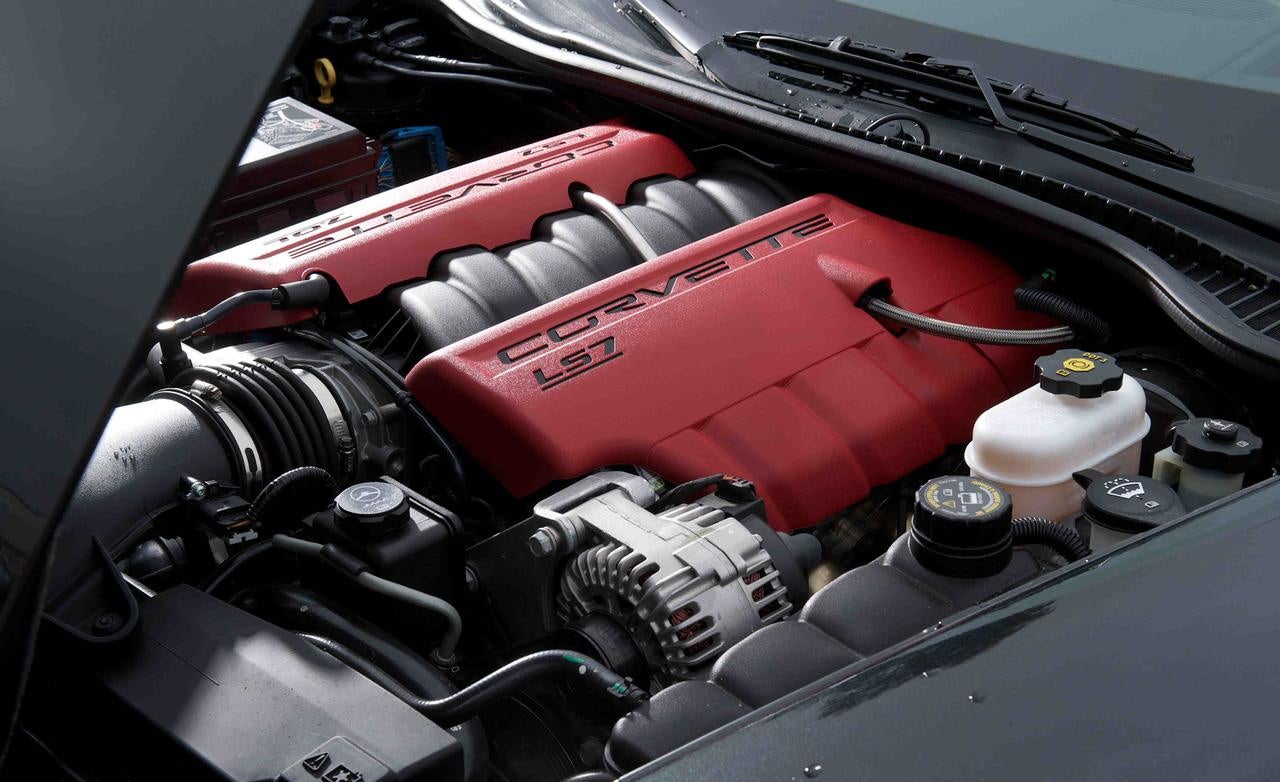
It was the spring of 2006 when I finally learned the true specs for the LS7 engine that inhabited the engine bay of the then-new Corvette Z06: 7008 cubic centimetres (427 CID), 512 PS (505 HP) at 6300 RPM and 637 Nm (470 lb-ft) at 4800 RPM. These numbers were considerably larger than the LS2's, however upon a second look, they seemed meagre. Let's take the following in account:
- the LS7 revs almost 10% harder than the LS2;
- the LS7 displaces over a litre (17.5%) more than the LS2;
- the intake valves are bigger than the LS2's;
- the exhaust valves are also bigger than the LS2's;
- GM rated the engine as topping out at 7100 RPM, yet it is known to be 8000 RPM-capable;
- the final horsepower count is 25% higher than the LS2's and torque is just 18% taller.
At the time, I was 13 or so years old, so I was obviously more interested in popping zits, pretending I could chase skirts, listening to music at obnoxious volumes and understanding that all-too-vile thing called Maths to care. In fact, back then I didn't even know for sure what torque figures were. But as the years accumulated, zits were replaced with beard, I started to actually chase skirts, I discovered what headphones were, and I had enemies other than Maths, my mind started to ask questions. One of those questions was how the LS7, which supposedly was an LS2 set for the battlefield, produce so little additional torque - my first question was about torque, not horsepower. After all, it has the combined displacement of a C20 and a Coyote, so why does it produce little more torque than a Gen V LT1? Shouldn't it blow pretty much everything off the road, apart from turbocharged and supercharged engines and the Viper's V10? Well, I think it does and that General Motors doesn't want you to know. Let me explain how.
Dyno figures don't add up
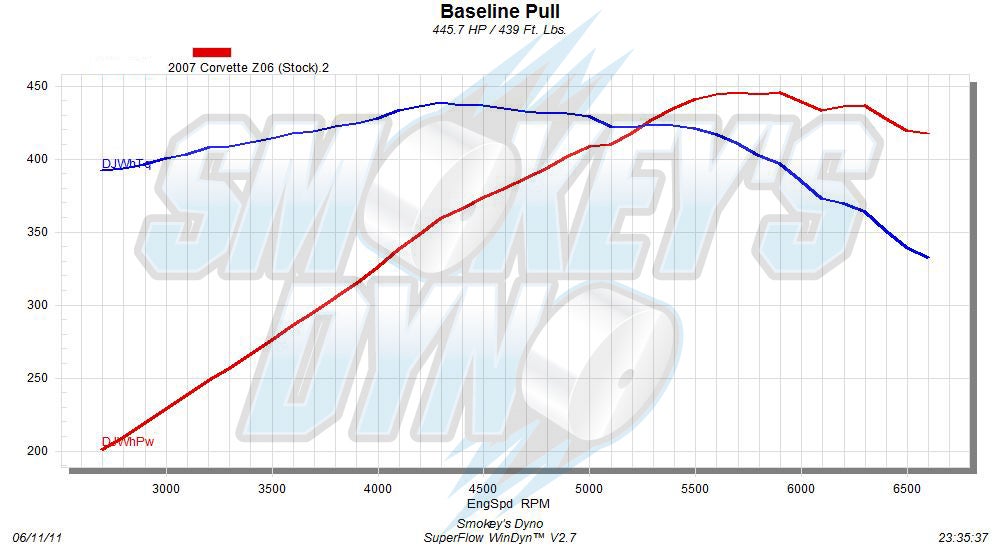
When I decided to look for C6 Z06 dyno figures, this was the first dyno chart I found. According to this chart, a stock LS7 engine as mounted in a 2007 Chevrolet Corvette Z06 produces 452 PS (446 HP) and 595 Nm (439 lb-ft) at the rear wheels. Assuming there's a drivetrain loss of fifteen percent, the flywheel output can be calculated as being of 532 PS (525 HP) and 700 Nm (516 lb-ft). That's considerably more than what GM declared. It's also of note that in this dyno chart, maximum power seems to be reached slightly before 6000 RPM, while maximum torque happens only a little after 4000 RPM (compare with GM's official figures of 6300 and 4800 RPM, respectively). Those figures certainly make a lot more sense than the comparatively puny official numbers, at least if we take in account the gargantuan displacement of the LS7.
The Z06 is too close to the ZR1 performancewise
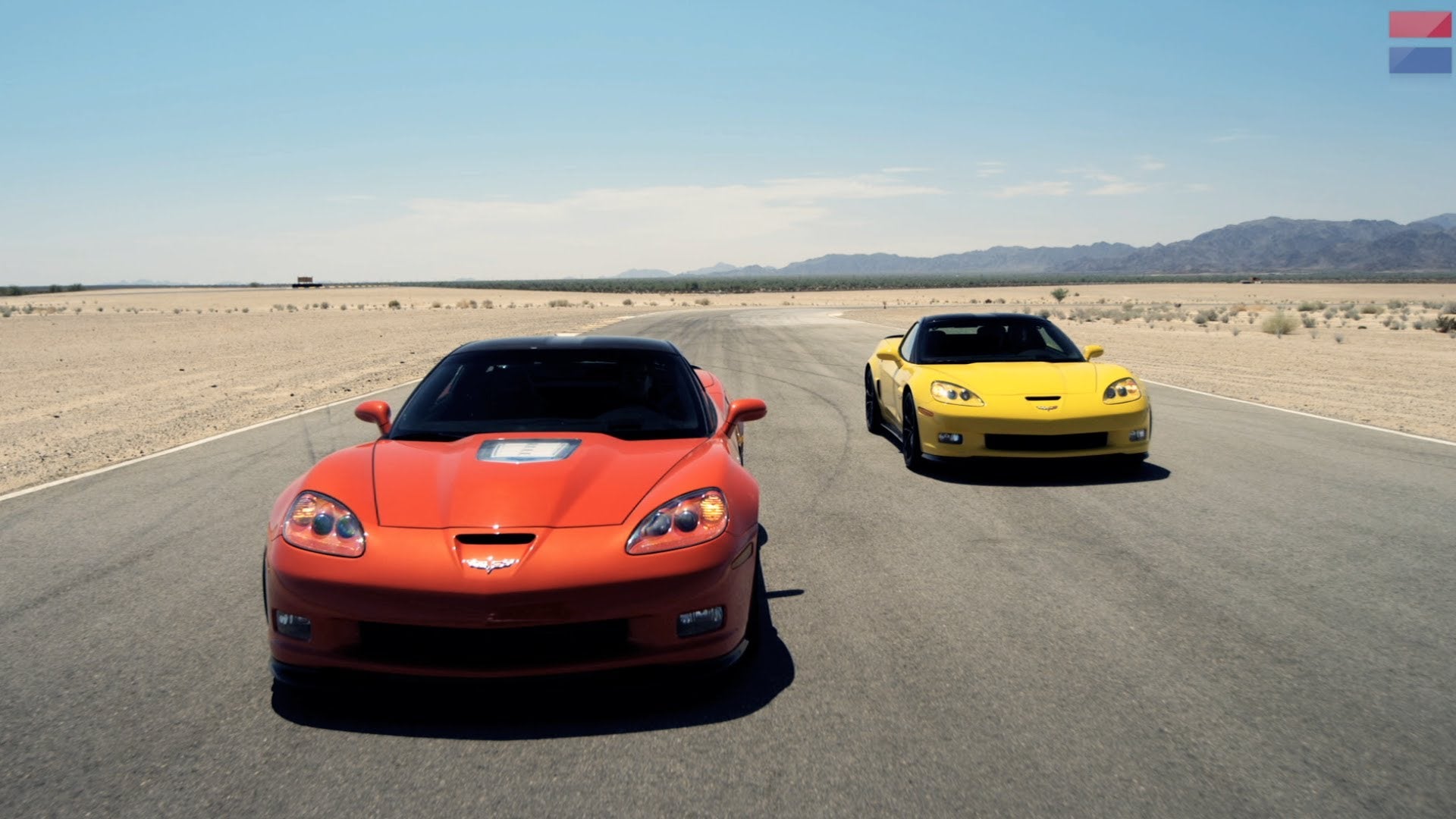
By the official numbers, one would expect the C6 Z06 to stand considerably behind the ZR1 in the straights. For starters, because the LS7's official 512 PS (505 HP) at 6300 RPM and 637 Nm (470 lb-ft) at 4800 RPM are small fish compared to the LS9's 647 PS (638 HP) at 6500 RPM and 819 Nm (604 lb-ft) at 3800 RPM, even though the Z06 is slightly lighter. Then, there's the fact the Z06 came with the Borg-Warner T56, which
Hot Rod
described as "prone to missed shifts" and
Evo
compared to a train's lever, while the ZR1 has the far more modern and convenient Tremec TR6060. Going by official figures, the Z06 has a power-to-weight ratio of 361 PS/T, while the ZR1 scales at 418 PS/T. That's a big difference. However, when the two cars are tested, the differences vanish. When
Car and Driver
road tested the whole Corvette range in December 2008, they weighted the Z06 at 1456 kg (3210 lbs), slightly more than claimed, and managed 60 mph in 3.6 seconds, 100 mph in 8.3 seconds, the quarter mile in 11.7 seconds, and the 5-60 mph run in 4.1 seconds. The ZR1, weighted at 1519 kg (3350 lbs), less than claimed, went up to 60 mph in 3.4 seconds, 100 mph in 7.6 seconds, the quarter mile in 11.5, and did the 5-60 mph run in 4.0 seconds. With even bigger differences in power-to-weight ratio than the ones I calculated, and the ZR1 just stands barely above the Z06 in all acceleration exercices (including a pathetic 0.1 second margin in the 5-60)?
Okay, let's ignore
Car and Driver
, they're not a serious car magazine.
Road and Track
did a similar test (plus a run in Willow Springs) in April 2012. The Z06, weighted at 1501 kg (3310 lbs), did 60 mph in 3.6 seconds, 100 mph in 7.9 seconds, the quarter mile in 11.7 seconds, and ran Willow Springs in 1:15'15. The ZR1, weighted at 1544 kg (3405 lbs), closer to claimed, did 60 mph in 3.5 seconds, 100 mph in 7.3 seconds, the quarter mile in 11.5 seconds, and ran Willow Springs in...
1:15'99
. A full
7 car lengths
behind the Z06. That's already with the almighty Tremec TR6060 in both cars, which puts both engines more-or-less in equal terms.
I couldn't find many numerical tests from magazines this side of the Atlantic, but
Auto Motor und Sport
did measure 100 km/h in 4.0 seconds, 160 km/h (approx. 100 mph) in 7.9 seconds, and 200 km/h in 11.9 seconds for the Z06 with the T56, while the ZR1 did 100 km/h in 3.8 seconds, 160 km/h in 7.8 seconds, and 200 km/h in 11.2 seconds. (Unfortunately the Germans decided to be lazy this time and did not weight the cars). That's a very insignificative difference between both.
They had possible reasons
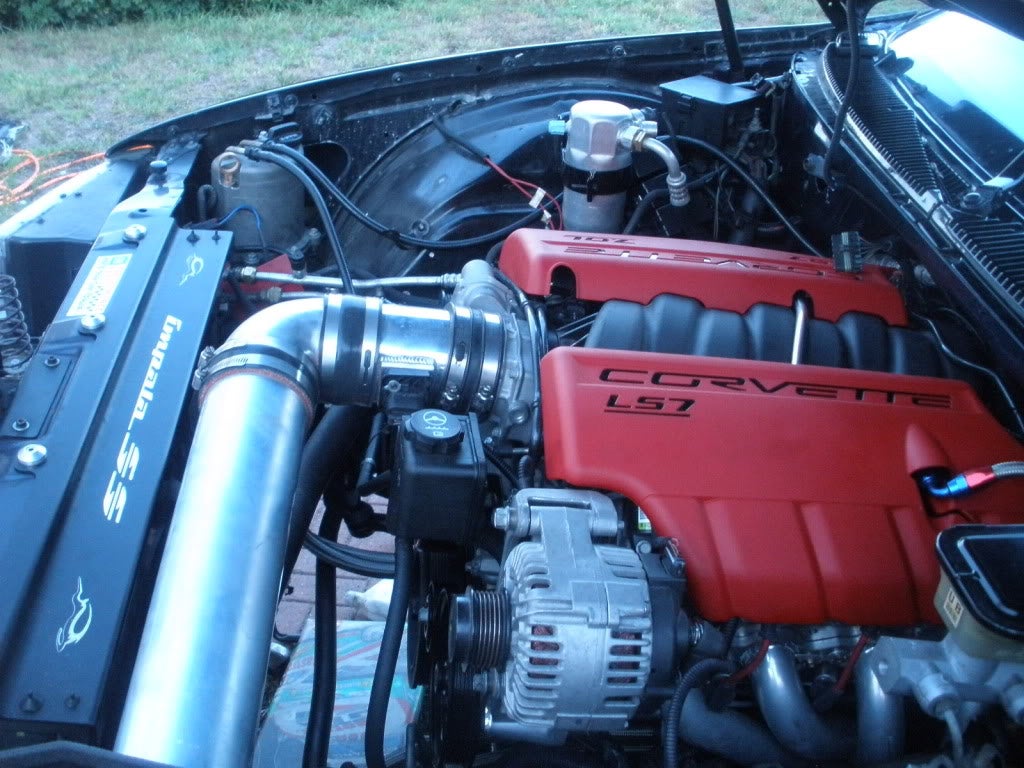
When Dodge released the Viper back in 1992, the engine was too noisy for the American EPA to certify it, thanks to the sidepipes. So instead, they decided to downrate the car at 400 HP at 4600 RPM in order not to scare American schoolchildren. In 1995, they decided to dump the sidepipes, so the car's real 415 HP at 5200 RPM could be revealed without Americans, being Americans, going all berserk that "the evil sports car scares our kids!!11" (no offence meant to Americans). When the C6 Z06 came out, Chevrolet advertised it as a "505 HP economy car". The American EPA did not issue a "gas guzzler" tax for it. Did General Motors simply downtune the test engine to pass the requirements, like they did back in the early 1970s for the Super Duty 455?
Other important question is related with range positioning. While the C6 ZR1 only came out in late 2008, one couldn't be silly enough to think that the ZR1 had been entirely developed in response to the 8.4L Viper. It takes a lot more time for such an extensive upgrade over the standard model to be developed, meaning that the plans for a 600+ HP, US$100+K Corvette were already known internally when the Z06 was to be released. And we all know how GM loves to underrate engines to prevent market cannibalism.
Conclusion
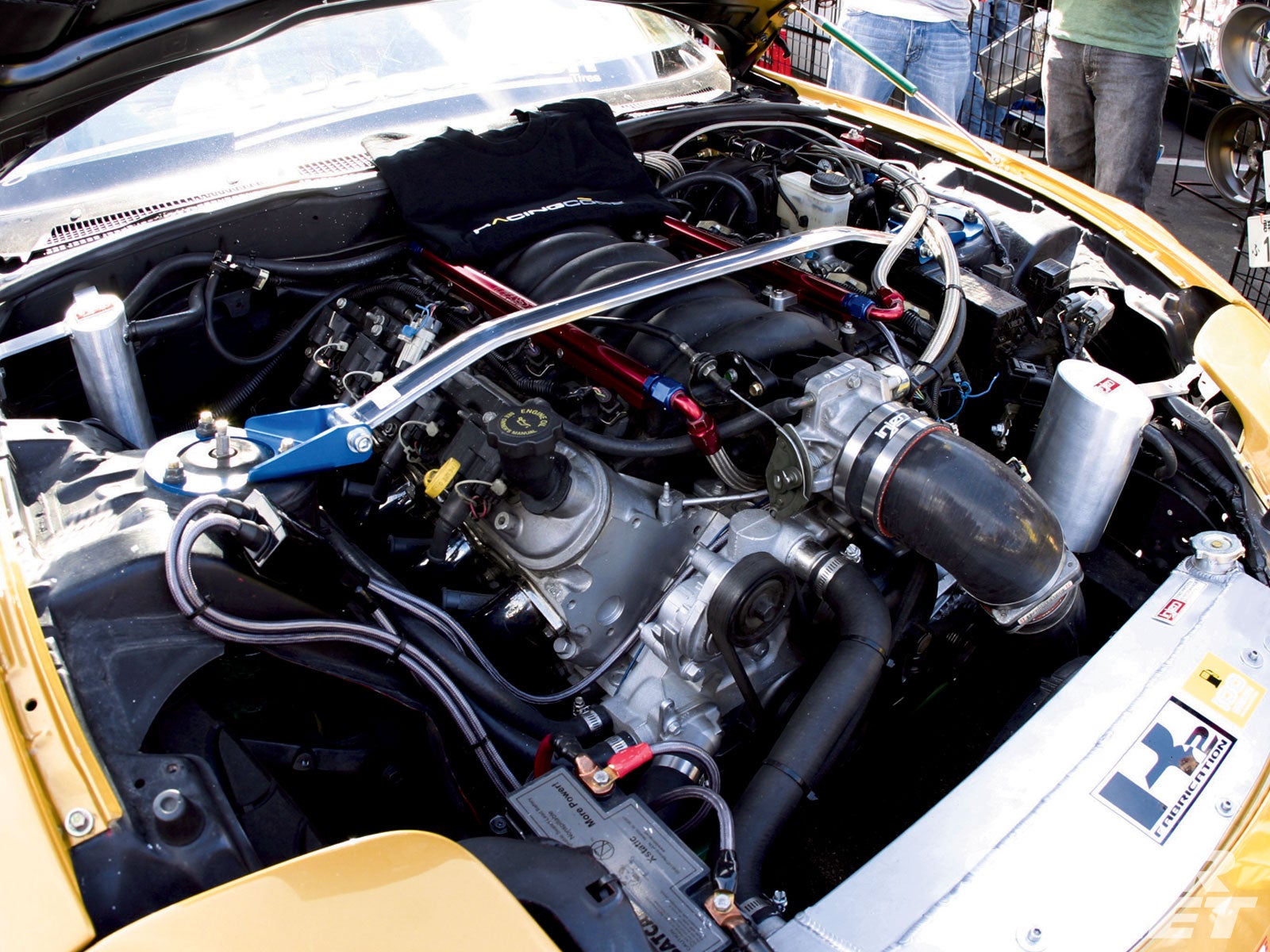
The conclusion is that there is no conclusion and my findings were inconclusive. I don't have a fully assembled, stock LS7 near me attached to a functional dyno, so I can't prove the validity of my statement. However, there's a fair amount of evidence and hypothetical causes for the possibility that the LS7 V8 was considerably underrated from the factory, especially in terms of torque. I'm not pretentious enough to claim it a fact without more than dyno sheet analysis and comparison between car magazine road test data. Still, I believe they did. After all, GM always lies.
 JR1
> Goshen, formerly Darkcode
JR1
> Goshen, formerly Darkcode
02/05/2014 at 16:55 |
|
Great article. I never considered it before but it would make sense. I always thought that 505hp was a small amount of a 7.0L engine, especially the strong LS platform. You argued a good point and made in convincing. Thanks for the write up!
 Arch Duke Maxyenko, Shit Talk Extraordinaire
> Goshen, formerly Darkcode
Arch Duke Maxyenko, Shit Talk Extraordinaire
> Goshen, formerly Darkcode
02/05/2014 at 16:56 |
|
http://www.hotrod.com/techarticles/e…
 Goshen, formerly Darkcode
> Arch Duke Maxyenko, Shit Talk Extraordinaire
Goshen, formerly Darkcode
> Arch Duke Maxyenko, Shit Talk Extraordinaire
02/05/2014 at 17:02 |
|
That test was done without CCs or mufflers.
 Goshen, formerly Darkcode
> JR1
Goshen, formerly Darkcode
> JR1
02/05/2014 at 17:02 |
|
Thank you for the kind words.
 Spaze
> Goshen, formerly Darkcode
Spaze
> Goshen, formerly Darkcode
02/05/2014 at 17:03 |
|
a LOT of the acceleration difference between the C6z and the ZR1 can be attributed to the ZR1 having a MUCH better geared transmission, not the difference in power.
 GhostZ
> Goshen, formerly Darkcode
GhostZ
> Goshen, formerly Darkcode
02/05/2014 at 17:04 |
|
1. Peak RPM has no indication on horsepower. What matters is RPM where the air flows most efficiency (highest volumetric efficiency)
2. Larger intake valves allow a higher volume of air, but can reduce intake velocity, actually reducing volumes of air at high RPM, so it is not always (but can be) a reliable measure of horsepower, but are a good measurement of horsepower potential. You are not comparing horsepower potential, but stock power.
3. Peak torque is only increased by 18%. Power is also increased by 18%, when at peak torque RPM. Peak torque is increased by 25%, when Peak Power is increased by 25%. The quoted peak torque measurement tells you almost nothing about the shape of the powerband, although it used to back in the day when engines had a much more narrow peak operating RPM than they do today (mostly thanks to improved computers, fuel injection, and vastly improved computer modeling for flow characteristics within certain shapes) That's because horsepower is a calculated measurement using the real world measurements of RPM and Torque, and they only differ by a single, arbitrary constant (5252 rpm) in the equation.
4. It all becomes worthless when you consider drivetrain loss.
5. If the engine is detuned, then it is not downrated . In reality, the LS blocks were so heavily over-engineered and designed to take power (although tolerances for measurements can be sketchy, from what I've heard) far above what they produced. This means that they can give the 'illusion' of being downrated because it make only require small alterations to reach higher limits that are normally expensive to find on a different engines.
Still, a good set of questions and a lot of interesting curiosity. It's still entirely possible they did underrate the engines, but to answer that for sure you'd need some actual data. The politics work out and it wouldn't surprise me if GM had done such a thing (and it was almost certainly done in the GTO) but the Corvette is usually never underrated and often overrated in their history.
Either way, good post.
 Fred (FreddsterExprs)
> Goshen, formerly Darkcode
Fred (FreddsterExprs)
> Goshen, formerly Darkcode
02/05/2014 at 17:05 |
|
Sport Auto did a test with 3 C6: A Grand Sport, a Z06 and a ZR1.
They measured the weight, and the ZR1 scaled in at 1526 kg (filled to the top with fuel), the Z06 was 46 KG lighter.
What proves your theory are the Laptimes. ZR1 with High Performance Pack: 1,08.3 Z06: 1,08.7. Both driven by the same driver in the same conditions on Hockenheim short.
 Goshen, formerly Darkcode
> Fred (FreddsterExprs)
Goshen, formerly Darkcode
> Fred (FreddsterExprs)
02/05/2014 at 17:06 |
|
The French or the German one?
 Arch Duke Maxyenko, Shit Talk Extraordinaire
> Goshen, formerly Darkcode
Arch Duke Maxyenko, Shit Talk Extraordinaire
> Goshen, formerly Darkcode
02/05/2014 at 17:06 |
|
It's shows what the engine does though.
And the factory HP is SAE not EPA.
 crowmolly
> Arch Duke Maxyenko, Shit Talk Extraordinaire
crowmolly
> Arch Duke Maxyenko, Shit Talk Extraordinaire
02/05/2014 at 17:09 |
|
Only baseline I saw was with headers, but there you go.
 crowmolly
> GhostZ
crowmolly
> GhostZ
02/05/2014 at 17:12 |
|
Further to your point:
The Gen II LT-1 was rated at 275 hp in the f-body and 300 hp in the Vette. Difference was a choked exhaust and intake ductwork. Underrated? No. But easy to free up that missing 25.
 Goshen, formerly Darkcode
> GhostZ
Goshen, formerly Darkcode
> GhostZ
02/05/2014 at 17:14 |
|
Thanks.
I most certainly commited a mistake by sticking with the peak values, but unfortunately GM did not release an official chart, so I had to go with what I had. When I mentioned the engine was detuned, I didn't mean the engine that went into the production cars. In 1973 when the EPA tested the SD455, GM's engineers noted the test took less than a minute so they made a timer to switch off the EGR. (The EPA did find out, however).
 GhostZ
> Arch Duke Maxyenko, Shit Talk Extraordinaire
GhostZ
> Arch Duke Maxyenko, Shit Talk Extraordinaire
02/05/2014 at 17:14 |
|
SAE is still pretty tightly controlled. It requires a full exhaust including catalytic converters and mufflers, as well as the full factory required amount of oil and (probably, not sure) a standard air pressure and temperature that tests are carried out in. It definitely requires all accessories too.
Drain some oil, lower ambient temperature, use high octane fuel, mess with the ECU a bit, remove the accessories, give it a tuned, unrestricted exhaust manifold (some tuning magazines are NOTORIOUS for this, especially on budget build) and a jump of 20-25% is not unlikely. But it would be impossible to replicate that in a driving car.
 pauljones
> Goshen, formerly Darkcode
pauljones
> Goshen, formerly Darkcode
02/05/2014 at 17:16 |
|
There are some things to consider here that would potentially run counter to your abstractions:
With regards to the 0-60 performance differential between the Z06 and ZR1, there are possibly several factors at play.
To start with, gearing is an issue. The Z06 may have a shorter first gear than the ZR1. There's also the fact that the ZR1 simply cannot effectively use all of its power during initial acceleration; it would simply rip the tires right off the wheels. Instead, to keep it tractable, the gear ratio may have been increased and the power restricted at first bite. That extra power doesn't come into its own until the car is already moving, where the ZR1 has a much greater abundance of power on tap at almost any given time. Take a look at the numbers you provided again, and you'll see that. 7.6 seconds vs 8.3 seconds to 100 mph is a huge difference. This may, to some extent, explain the comparatively small difference in acceleration numbers between the two.
Secondly, there's the comparison between the LS2/3 and the LS7 the difference in displacement between the LS2 and LS7 was actually slightly less than one liter; the difference between the LS3 and the LS7 was less than .7 liters. The LS7, despite its displacement advantage, is also almost entirely aluminum, meaning that it's lighter and has less rotational mass, which is what allows it to rev like it does; though it also come at the expense of a minor amount of torque-making capacity.
As for the Willow Springs lap times, that's not a surprise at all - the Z06 was very specifically designed to be a track weapon. The ZR1, interestingly enough, was not. It was meant to be a tractable, road-going cruise missile. It may have higher outright output than the Zo6, but that's considerably less important around the track than the ability to put out the same approximate power level on a consistent basis, something that the LS7 excels at. Weight also comes into play, with the ZR1 being somewhat heavier. Gearing, again, would also come into play here. There's also the fact that Willow Springs is actually a comparatively small course, which diminishes the ability of the LS9 to show off its power advantage. Note that on larger courses like the Nurburgring, the ZR1 absolutely blew the Zo6's time out of the water.
While I would agree that there is some possibility that the LS7 was intentionally underrated, I don't think the difference is as significant as you might think.
 Arch Duke Maxyenko, Shit Talk Extraordinaire
> GhostZ
Arch Duke Maxyenko, Shit Talk Extraordinaire
> GhostZ
02/05/2014 at 17:17 |
|
So, there you go, GM rated the motor accurately. As far as lap time differences and 0-60 times are concerned, what's the difference in gearing between the Z06 and the ZR1?
 Goshen, formerly Darkcode
> pauljones
Goshen, formerly Darkcode
> pauljones
02/05/2014 at 17:21 |
|
True and yes, except for one thing. The LS7 scales at 7008cc; the LS2 scales at 5967cc; the LS3/A/9 scales at 6162cc. 7008 minus 5967 is 1041cc, a bit more than a litre; 7008 minus 6162 is 846cc, considerably more than 0.7 litres.
 GhostZ
> Arch Duke Maxyenko, Shit Talk Extraordinaire
GhostZ
> Arch Duke Maxyenko, Shit Talk Extraordinaire
02/05/2014 at 17:22 |
|
(From a forum)
http://forums.corvetteforum.com/c6-z06-discuss…
Z06 1st gear - 2.66 ZR1 2.29:1
Z06 2nd gear - 1.78 ZR1 1.61:1
Z06 3rd gear - 1.30 ZR1 1.21:1
Z06 4th gear - 1.00 ZR1 1:1
Z06 5th gear - 0.74 ZR1 0.81:1
Z06 6th gear - 0.50 ZR1 0.67:1
It's pretty obvious that for the first three gears, the Z06 has about a 10% advantage in RWTQ. It's not until the later ratios that the ZR1 takes over, which I would bet is to both keep the instant torque at the wheels low (so they wouldn't have to put bigger tires or stronger differentials on) or to put more torque on the high-mph range to increase its top speed. The ZR1 top speed was a pretty big selling point back when it came out.
I also think the Z06 weighed less, but could be wrong.
 Arch Duke Maxyenko, Shit Talk Extraordinaire
> GhostZ
Arch Duke Maxyenko, Shit Talk Extraordinaire
> GhostZ
02/05/2014 at 17:26 |
|
It did, depending on the options, but superchargers ain't exactly light.
 Saracen
> Goshen, formerly Darkcode
Saracen
> Goshen, formerly Darkcode
02/05/2014 at 17:27 |
|
The LS2 has direct injection. That makes a signficant difference.
Furthermore, you simply cannot just compare two dyno charts you found on the interwebz. Different cars, different dynos, different elevation, temperature, humidity, etc. Show me two dyno charts comparing stock C7 and C6 Z06 cars on the same dyno on the same day.
Regarding performance... I'll bet a lot of the ZR1's massive supercharged torque is simply impossible to get to the ground without massive slicks and drag race friendly suspension work. And once again, you are comparing different magazine times on different tracks on different days.
 camaroboy68ss
> Goshen, formerly Darkcode
camaroboy68ss
> Goshen, formerly Darkcode
02/05/2014 at 17:30 |
|
This is nothing new to GM they have been under rating motors for a long time. Pontiac used carb linkage that wouldn't open the secondaries all the when wide open on their muscle cars.
Chevy in 67 rated the L88 at 430 hp while in fact had near 550 and charged more so that idiots wouldn't kill themselves since the motor was a race motor.
Chevy would also stick the exact same motor in different cars but underrate them to make the Vette top dog. The 70 LT-1 is a good example 370 hp in a corvette, 360 in a Z28. Same goes for big blocks a 375hp 396 ci is the same a 425hp depended what car the came in.
 V8Demon - Prefers Autos for drag racing. Fite me!
> Goshen, formerly Darkcode
V8Demon - Prefers Autos for drag racing. Fite me!
> Goshen, formerly Darkcode
02/05/2014 at 17:48 |
|
Did anyone take note of the fact that the dyno chart posted is for a Superflow Dyno? These are Eddy Current Dynos and need calibration of some sort ( I won't pretend to know what it actually IS).
To be fair though many cars released in the past decade or even longer have been known to be under-rated.
 1337HPMustang
> Goshen, formerly Darkcode
1337HPMustang
> Goshen, formerly Darkcode
02/06/2014 at 01:55 |
|

 jdrgoat - Ponticrack?
> Goshen, formerly Darkcode
jdrgoat - Ponticrack?
> Goshen, formerly Darkcode
02/06/2014 at 03:38 |
|
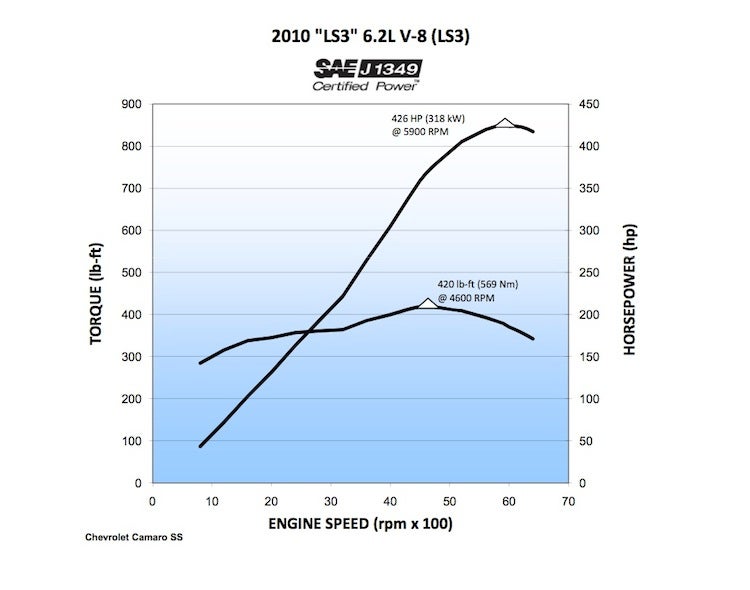
In a 2010 Camaro SS.
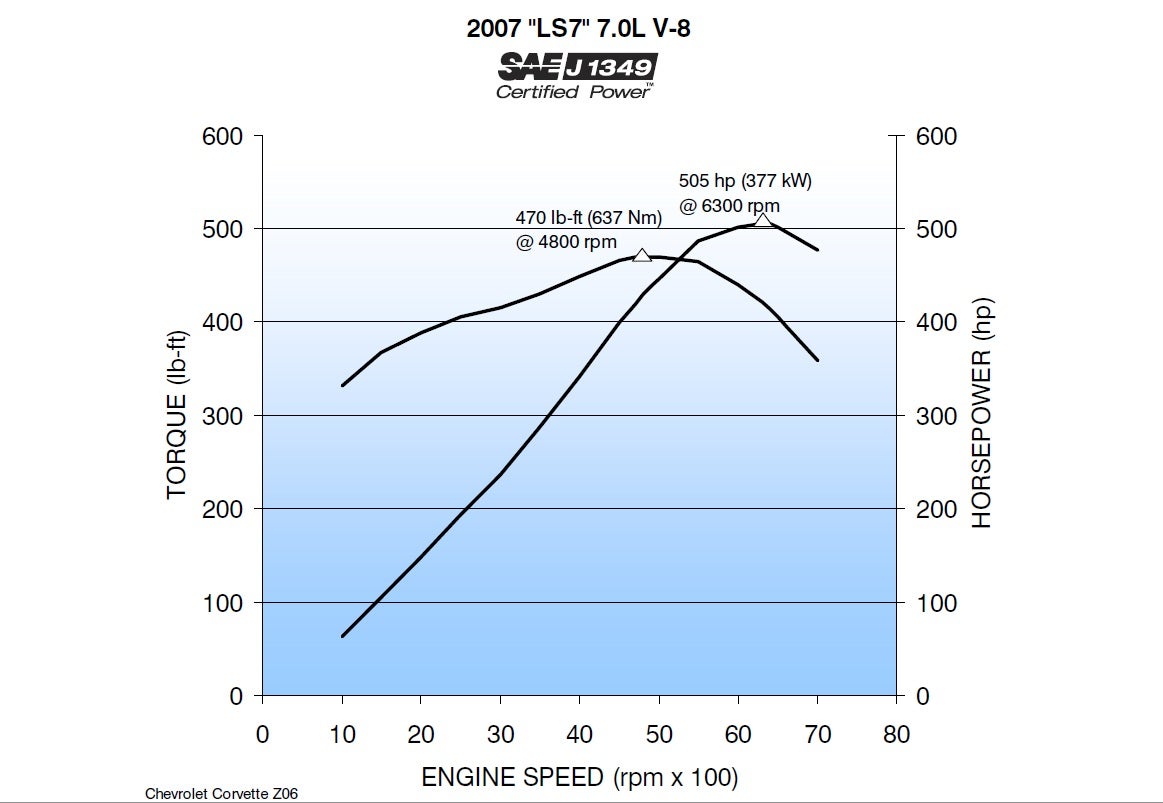
In a 2007 Corvette Z06.
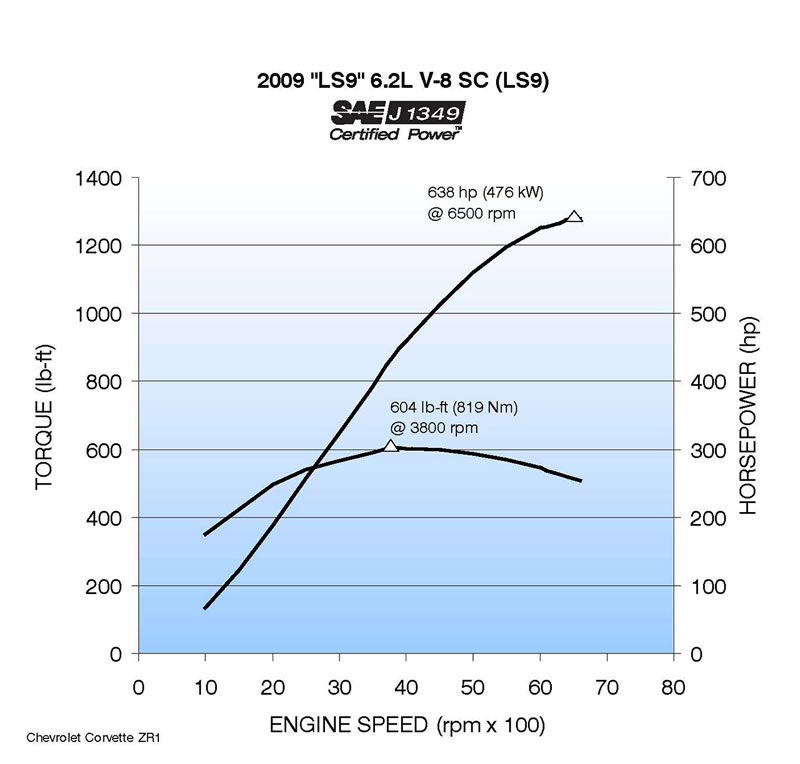
In a 2009 ZR1.
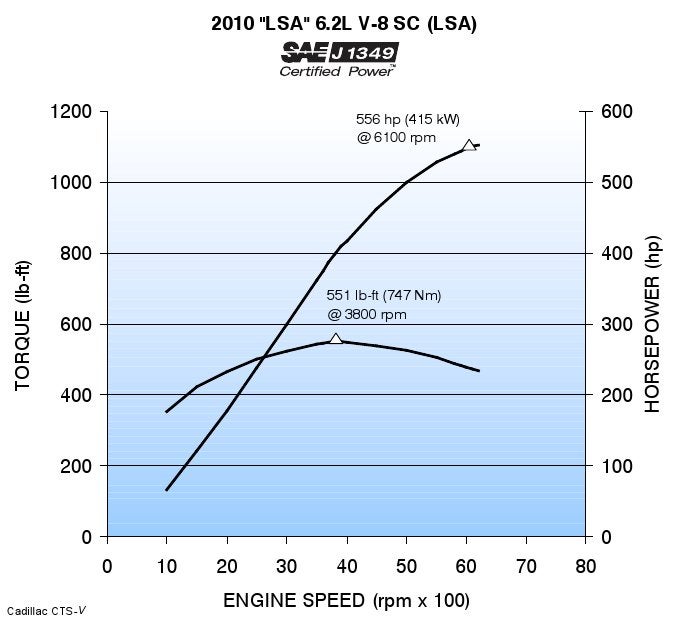
In a 2010 CTS-V.
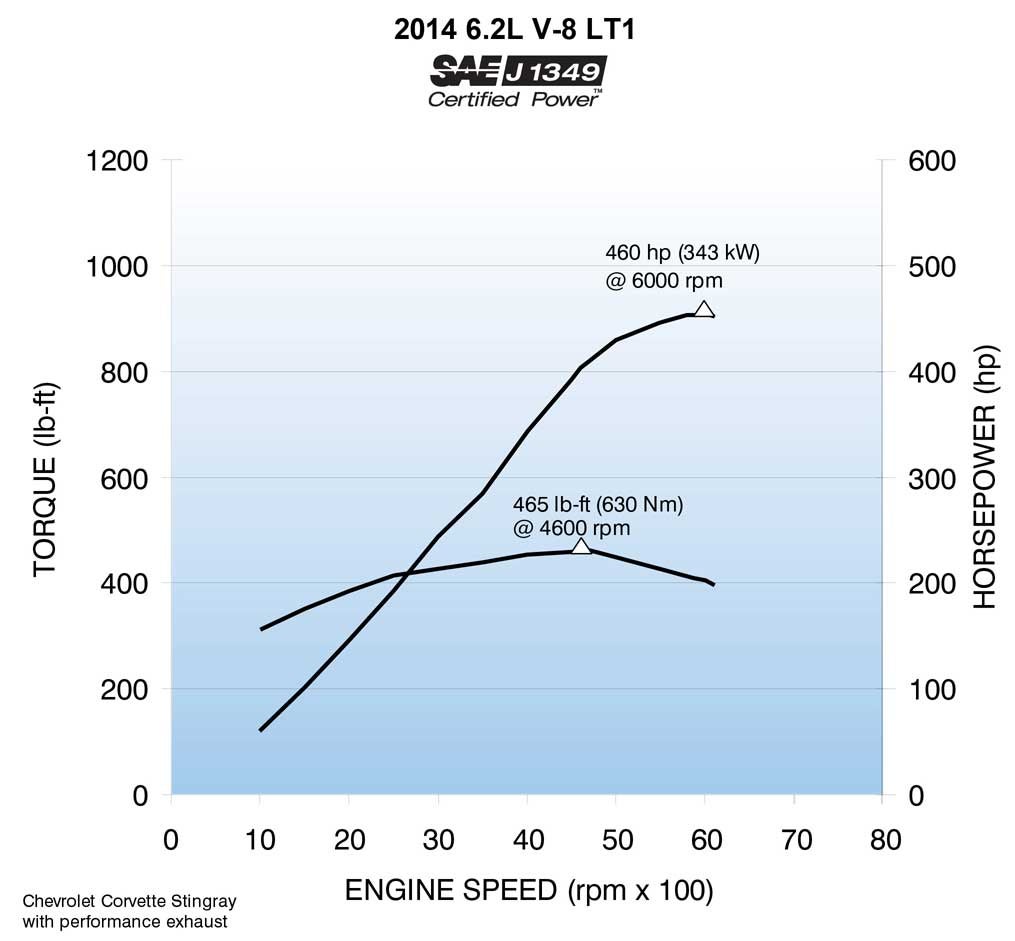
In a 2014 Corvette with NPP.
I realize it's not that easy to always find these charts (hence why I saved them), but they are released.
If you want to keyboard bench race the GM V8 engines even more, start learning what a camshaft spec sheet can tell you, and then look them up for these engines. (The 2001 LS6 cam is the same as the LS2 cam!? My goodness!) You will eventually start to see how some outputs are limited, and why peaks are where they are. (Could a LS7 make use of the 8000rpm it's capable of with a cam swap and upgraded valvetrain parts to take the abuse...?)
But alas, these are also (mostly) just the thoughts of another keyboard bench racer who has yet to personally tear into his LS1.
 jdrgoat - Ponticrack?
> Fred (FreddsterExprs)
jdrgoat - Ponticrack?
> Fred (FreddsterExprs)
02/06/2014 at 03:42 |
|
The problem with that test, would be that the course is so short. Very little time is spent on a straightaway where the horsepower makes a large difference, versus the corners where you're more limited by the chassis' lateral grip.
I'll bet that on that course, a Miata would not be slower enough to indicate its horsepower deficiency, either.
 jdrgoat - Ponticrack?
> Saracen
jdrgoat - Ponticrack?
> Saracen
02/06/2014 at 03:47 |
|
LS2 does not have direct injection. For starters, this wouldn't make sense. The LS2 was released for MY05, while the LS7 came out in MY06. The first SBC to have DI is the GenV LT1 that just came out for MY14.
Apart from that, I completely agree with your point of not just comparing two dyno sheets from the internet. The only time this is (close enough to) acceptable is if they both were corrected to SAE numbers. This is rarely the case, though, as many people who have their cars dynoed don't know the difference, and the bigger numbers that STD correction factors print out make for better parking lot bragging rights.
Regarding performance... you remind me of a good source I should share with the OP.
 jdrgoat - Ponticrack?
> Goshen, formerly Darkcode
jdrgoat - Ponticrack?
> Goshen, formerly Darkcode
02/06/2014 at 04:02 |
|
Another post reminded me of some good information that you can use to gnaw on.
If you want to determine the honest power of two engines, then the number you want to be looking at is the trap speed at a drag strip. The ET has far too many variables, even if you have the same driver on the same day. Since we're comparing two engines in two C6s, however, I think the differences in a straight line may be ignored in this instance (save for the weights).
Allow me to bring to your attention, Ranger . To the best of my knowledge, he seems to always set the best 1/4 mile times for modern Corvettes. He tests them stock, and with drag radials (which reduces even more of the chassis differences).
Using his trap speed of 132.02mph in a ZR1 with drag radials, and an assumed race weight of 3600lb (includes driver, and I have no idea what he weighs...) in the drag racing workbench calculator on my phone gave me a calculated HP of 638.29... which is ridiculously close to GM's number.
Now here's something I didn't expect. Using his record trap speed of 129.50 in a Z06 with drag radials and an assumed race weight of 3375lb, the same calculator gives HP at 564.78.
Just to be thorough, let's look at his record in a C5 Z06 with DRs. He trapped 120.21mpg (with a CAI), assumed race weight of 3300 (C5 was lighter), and we get a calculated 441.7hp. I know people say the LS6 was underrated also, but usually the number quoted is closer to 425hp.
So... in conclusion, maybe you're right?
 Saracen
> jdrgoat - Ponticrack?
Saracen
> jdrgoat - Ponticrack?
02/06/2014 at 04:25 |
|
I was thinking he was referring to the new corvette's direct injection motor.
 jdrgoat - Ponticrack?
> Saracen
jdrgoat - Ponticrack?
> Saracen
02/06/2014 at 04:30 |
|
Gotcha. Yeah, that's the LT1. They both have the exact same displacement, though.
 Goshen, formerly Darkcode
> jdrgoat - Ponticrack?
Goshen, formerly Darkcode
> jdrgoat - Ponticrack?
02/06/2014 at 04:52 |
|
I had heard that it was possible to calculate true horsepower based on trap speeds but never knew how. The LS6 and LS7 estimates seem even higher than I'd expect.
 Goshen, formerly Darkcode
> jdrgoat - Ponticrack?
Goshen, formerly Darkcode
> jdrgoat - Ponticrack?
02/06/2014 at 04:56 |
|
Well another thing I got wrong. Thanks, I had never heard of car manufacturers actually releasing their charts.
 jdrgoat - Ponticrack?
> camaroboy68ss
jdrgoat - Ponticrack?
> camaroboy68ss
02/06/2014 at 04:59 |
|
Don't forget the RA IV Pontiac being rated only 4hp more than the RA III and yet costing a lot more. It kept the "idiots" away, as you say. There was a lot more of a difference than 366hp vs 370hp, however.
 Fred (FreddsterExprs)
> jdrgoat - Ponticrack?
Fred (FreddsterExprs)
> jdrgoat - Ponticrack?
02/06/2014 at 07:02 |
|
The course is short, yes. But there are visible differences showing that the Z06 is remarkably close to the ZR1, but the Grand Sport is far behind. Take a look at the map:
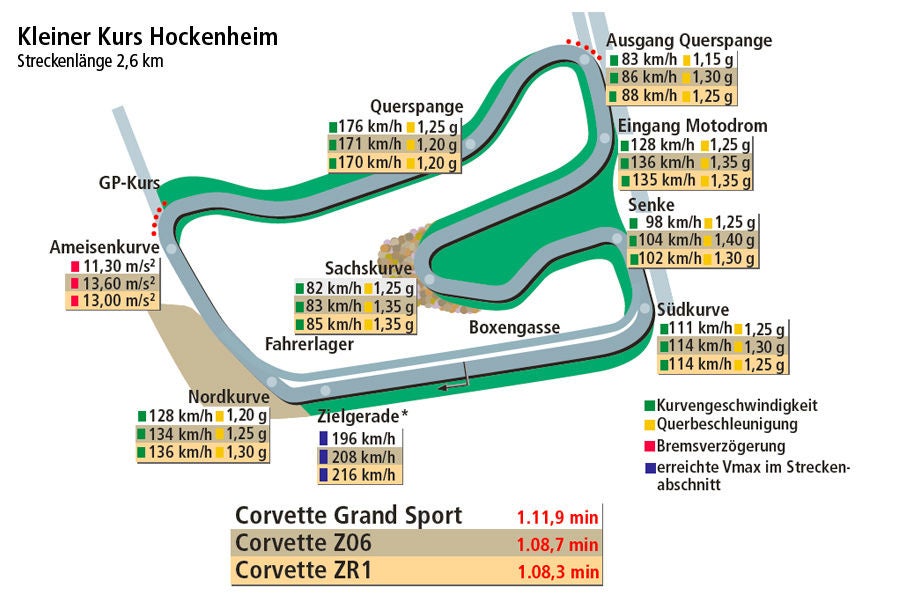
The ZR1 was 8kp/h faster on the short straight. It isn't that much considering it has more torque and about 110hp more. In total the Z06 lost 0.4 seconds on 2.6km - or just one and a half tenths per km.
Also the Z06 was faster through some corners. Probably the 42kg less weight come into play there.
 Fred (FreddsterExprs)
> Goshen, formerly Darkcode
Fred (FreddsterExprs)
> Goshen, formerly Darkcode
02/06/2014 at 07:03 |
|
Ze german one!
http://www.sportauto.de/vergleichstest…
 Yowen - not necessarily not spaghetti and meatballs
> Fred (FreddsterExprs)
Yowen - not necessarily not spaghetti and meatballs
> Fred (FreddsterExprs)
02/06/2014 at 08:09 |
|
Wow, that makes you think twice about springing for a ZR1, haha.
 camaroboy68ss
> jdrgoat - Ponticrack?
camaroboy68ss
> jdrgoat - Ponticrack?
02/06/2014 at 09:40 |
|
Yeah GM was just flat notorious of underrating all of its high performance cars.
Then Pontiac really screwed with ya in the 64 GTO vs GTO Motor Trend, that car had a 421 instead of a 389.
 bjmsam
> pauljones
bjmsam
> pauljones
04/07/2018 at 17:56 |
|
The ZR1 lapped the ring in 7:19.63 vs. 7:22.68 for the Z06. Were it not for the super long straights, the difference would have been considerably less than only 3.05 seconds over those 12-13 miles.
1 - [(7*60+19.63) / (7*60+22.68)] = 0.6% difference